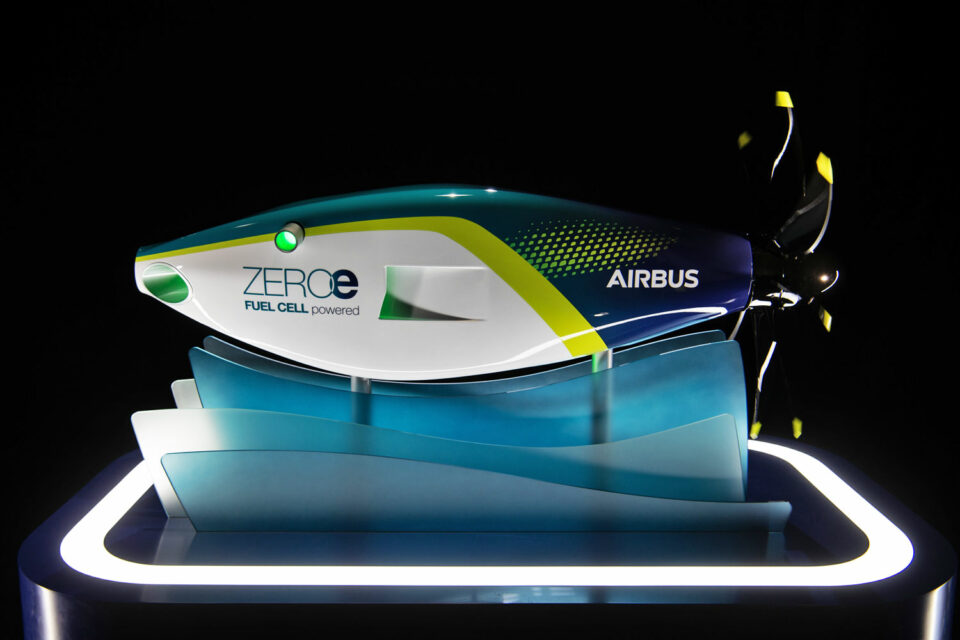The Airbus Summit 2022, an annual meeting held this week by the Airbus group, brought to light the first details of the electric motorization system with hydrogen cells that is being developed by the manufacturer as a zero-emissions solution for its aircraft in the future.
Hydrogen propulsion systems are considered one of the most promising alternatives to reduce and even eliminate the pollution generated by aviation, since there is no carbon dioxide emission. According to Airbus, the new technology should be incorporated into its aircraft from 2035 onwards.
The eco-friendly engine will be tested on the ground and in flight using the ZEROe Demonstration Aircraft, an aerial test platform based on the A380 (the model with serial number MSN001). The aircraft with significant modifications to the fuselage to carry the alternative propulsion system and other associated elements will fly later this decade, guarantees the manufacturer.
“Fuel cells are a potential solution to help us achieve our zero-emission ambition and we are focused on developing and testing this technology to understand if it is feasible and viable for a 2035 entry-into-service of a zero-emission aircraft,” said Glenn Llewellyn, VP Zero-Emission Aircraft, Airbus.
According to Llewellyn, fuel cell engines may be capable of being used in a 100-passenger aircraft with a range of around 1,852 km (1,000 nautical miles). “By continuing to invest in this technology we are giving ourselves additional options that will inform our decisions on the architecture of our future ZEROe aircraft, the development of which we intend to launch in the 2027-2028 timeframe.”

How it works?
There are two ways in which hydrogen can be used as an energy source for aircraft propulsion. First, by burning hydrogen in a gas turbine. The other method is to use fuel cells that convert hydrogen into electricity that powers a propeller engine. The two formats can also be combined, creating a hybrid-electric system that does not require batteries. It is this technology that Airbus will test on the A380.
The prototype will have the gas stored in a liquid state in cryogenic tanks. To operate the propulsion system, the hydrogen will be converted to a gaseous condition and distributed among the fuel cells. From there, the “magic” happens.
The electricity generated by the propulsion system proposed by Airbus happens through an electrochemical reaction between hydrogen and dioxygen molecules in the fuel cell. The resulting action produces direct electric current which is further converted into alternating current which in turn powers the propeller motor and provides the thrust. As an “emission”, this type of engine expels water into the atmosphere.
Regarding the tests of the system on board an A380, Mathias Andriamisaina, head of Demonstrators and ZEROe Tests at Airbus, commented that the selection of the largest passenger aircraft in the world was a wise choice for the program. “It has plenty of space internally – so there are no constraints in terms of accommodating everything we need, as well as the ability to test multiple configurations.”
While most of the equipment is installed outside the aircraft, including the reciprocating engine pod, inside will be what the team calls a “tent”. Within this structure, which will be 10 meters long and 4 meters wide, up to four cryogenic tanks containing liquid hydrogen can be housed, in addition to supply lines and other resources, such as the flow system for water generated as a by-product of the electrochemical reaction.


